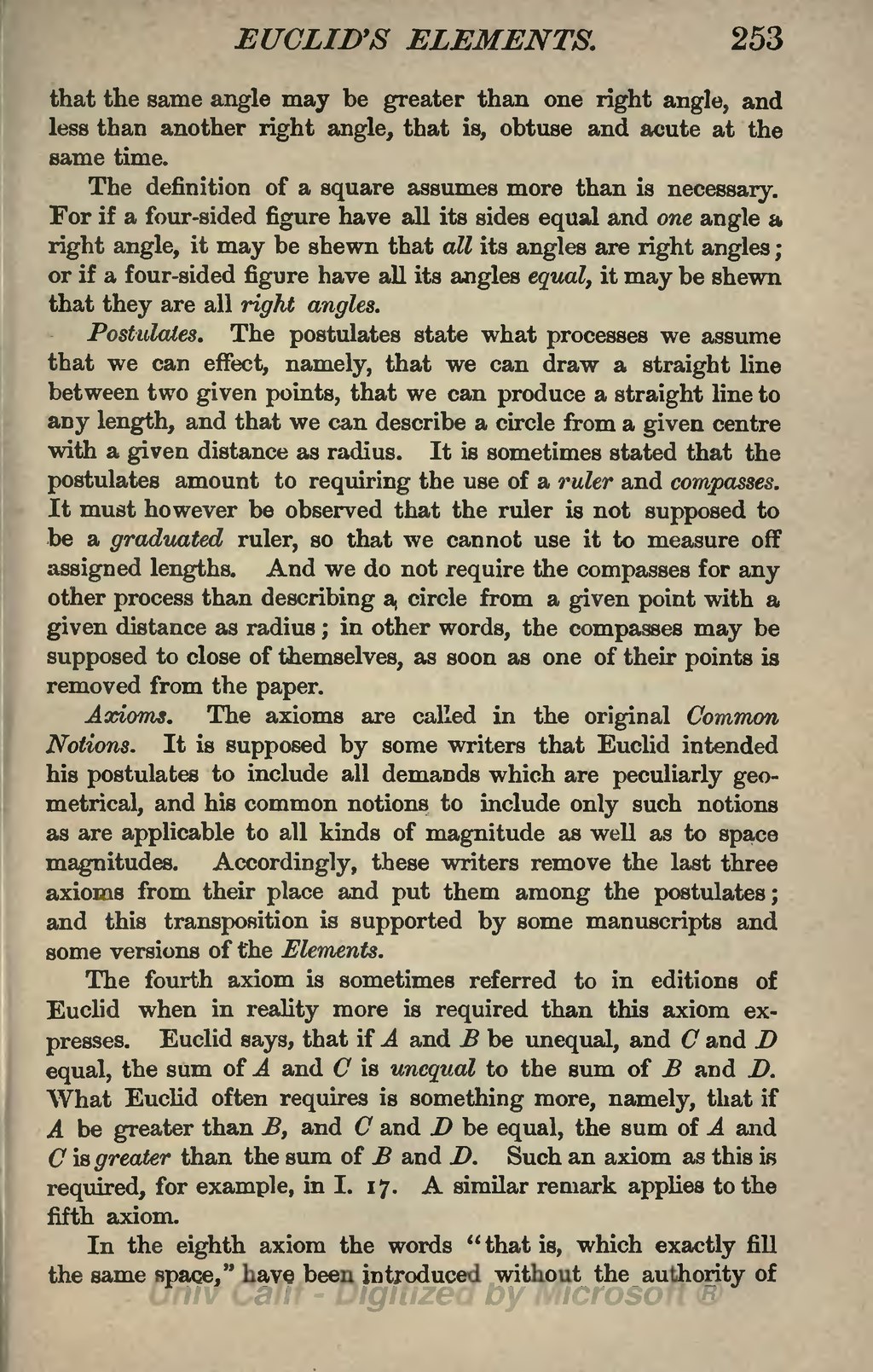that the same angle may be greater than one right angle, and less than another right angle, that is, obtuse and acute at the same time.
The definition of a square assumes more than is necessary. For if a four-sided figure have all its sides equal and one angle a right angle, it may be shewn that all its angles are right angles; or if a four-sided figure have all its angles equal, it may be shewn that they are all right angles.
Postulates. The postulates state what processes we assume that we can effect, namely, that we can draw a straight line between two given points, that we can produce a straight line to any length, and that we can describe a circle from a given centre with a given distance as radius. It is sometimes stated that the postulates amount to requiring the use of a ruler and compasses. It must however be observed that the ruler is not supposed to be a graduated ruler, so that we cannot use it to measure off assigned lengths. And we do not require the compasses for any other process than describing a, circle from a given point with a given distance as radius; in other words, the compasses may be supposed to close of themselves, as soon as one of their points is removed from the paper.
Axioms. The axioms are called in the original Common Notions. It is supposed by some writers that Euclid intended his postulates to include all demands which are peculiarly geometrical, and his common notions to include only such notions as are applicable to all kinds of magnitude as well as to space magnitudes. Accordingly, these writers remove the last three axioms from their place and put them among the postulates; and this transposition is supported by some manuscripts and some versions of the Elements.
The fourth axiom is sometimes referred to in editions of Euclid when in reality more is required than this axiom expresses. Euclid says, that if A and B be unequal, and C and D equal, the sum of A and C is unequal to the sum of B and D. What Euclid often requires is something more, namely, that if A be greater than B, and C and D be equal, the sum of A and C is greater than the sum of B and D. Such an axiom as this is required, for example, in I. 17. A similar remark applies to the fifth axiom.
In the eighth axiom the words "that is, which exactly fill the same space," have been introduced without the authority of
